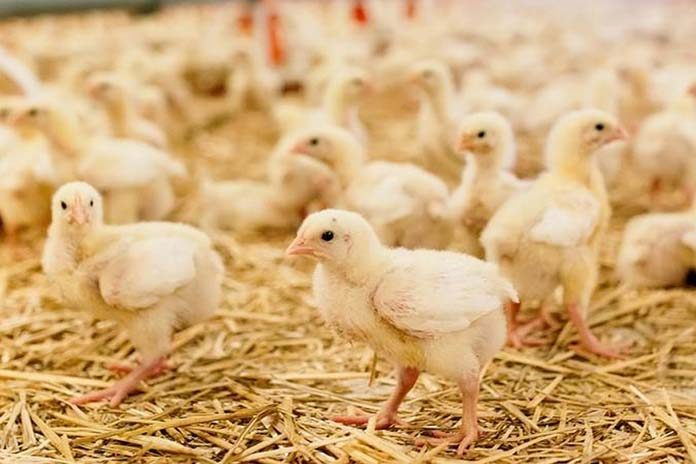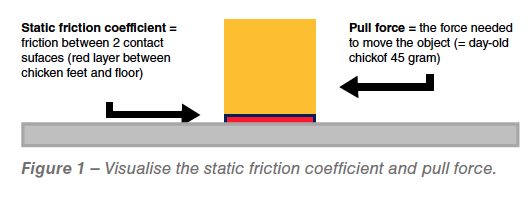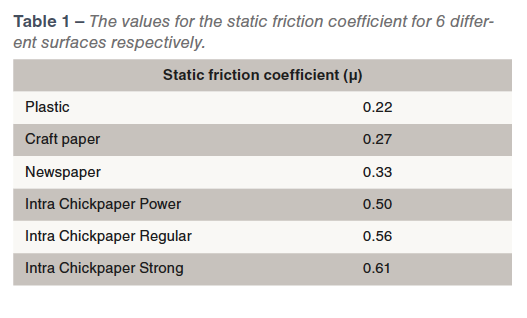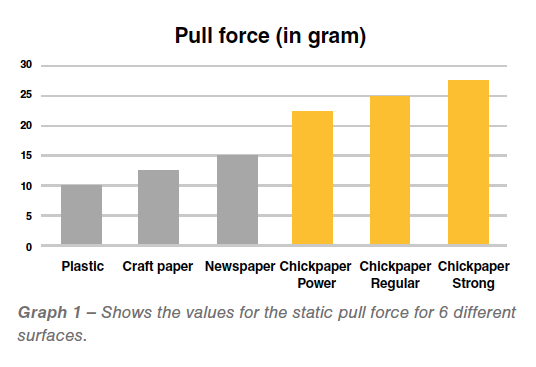
Splayed legs in chicks is a condition that occurs in newly hatched chicks. It is caused by a weakness or injury in the tendons of the feet and legs. When evident at hatch, the causes may be due to a poor chick position inside the egg or an improper incubator temperature.
The most common cause for day-old chicks is when a brooder floor is too slippery and the young baby chick’s legs slip, causing tendon injury in the legs.
The surface of Intra Chickpaper is specially developed with more texture, to give the chick an optimal grip with its feet.
Splayed legs can involve one leg, although typically it affects both, and causing them to extend outward to the sides of the chick’s body. The severity ranges from mild to severe, and often may take a couple of weeks until it becomes obvious.
There are a number of different reasons why chicks can develop splayed legs, such as fluctuations during incubation (high humidity or any temperature fluctuations), hatching-related (too high or low temperature of the incubator during hatching) or an inadequate diet for breeders.
However, the main cause of a development in chicks after hatching is a slippery floor surface, particularly in their first few days. It may be that a chick with slightly crooked toes cannot stay balanced properly resulting in the development of splayed legs, but more commonly it will be caused by a smooth slippery surface. When the condition is so severe that the chicks are unable to walk, it puts them at high risk of starvation.
It has been estimated that 2-6% of all broilers display some observable signs of skeletal problems, while many more will be affected in a less visible way.
During the first period chicks require a floor surface that provides them with adequate traction to move around, otherwise it causes their legs to slide out from underneath them and prevents them from developing their leg muscles and tendons properly.
Anti-slip ensures stability and safety from the start
The number one priority, when choosing bedding, is providing enough support for proper leg and feet development in your chicks. Chicks grow fast, and if they have a firm ground to walk on without slipping, it supports to prevent permanent leg and feet issues.
In human’s everyday life also several measures have been taken to prevent slipping accidents. For example, toddlers that just started making their own first steps on laminate or tile floor can be helped tremendously with anti-slip socks. Also the anti-slip mat in the shower is a clear example of a household aid that increases the friction between 2 surfaces.
The degree of friction between 2 contact surfaces can be expressed as the friction coefficient. For an object standing on a surface when the object is not sliding, this is called the “static friction coefficient (µ)”.
When a chick walks around its body is moving forward and a force is applied on the feet. The ground underneath the feet counteracts this force by providing friction and thereby prevents the chick to slip. The “pull force” is the force needed to make an object start moving when standing still and can be measured by a pulling force-meter.

Thus, a high static friction coefficient between chicken feet and the floor means the ground is better able to oppose the forces of a moving chick, and will therefore result in a lower risk of slipping. As examples, the friction coefficient of a ski on snow is at 0.14 and for silk on silk 0.23, while for a horseshoe on concrete it is much higher at 0.67 and a car tire on dry asphalt is even 0.72.

In Table 1 below the static friction coefficient and in Graph 1 the pull force of 6 different surfaces are compared mutually. These surfaces are: Plastic, Craft paper, Newspaper and the 3 types of Intra Chickpaper: Power, Regular and Strong. The chicken’s weight, as test object, was standardised at 45 gram.

The graphs clearly show that the specially developed roughing of Intra Chickpaper provides the chicken legs an optimal grip. The static friction coefficients for the Intra Chickpapers are relatively high (on average at 0.56), while Plastic, Craft paper and Newspaper are lower in a range around 0.27. The graph with pull forces shows that Intra Chickpaper requires a relatively high force of around 25 gram to shift the chick from its place. The other 3 floor types Plastic, Craft paper and Newspaper already start moving around a force of 12.5 gram.
Surfaces such as Craft paper, plastic or newspaper should better not be used in the brooder. On these surfaces the chicks don’t get sufficient grip. Furthermore they do not well absorb the first droppings of urine and manure, tend to get packed and mouldy as well.

Based on a new innovative technology the surface of Intra Chickpaper has been developed with optimal texture. It has been roughed to meet the important criteria to give the chicken feet and legs an optimal stability, grip and safety.
It can be concluded that upon using Intracare’s Chickpapers there is at least a 2 times lower risk on slipping compared to newspaper, craft paper and plastic.

















